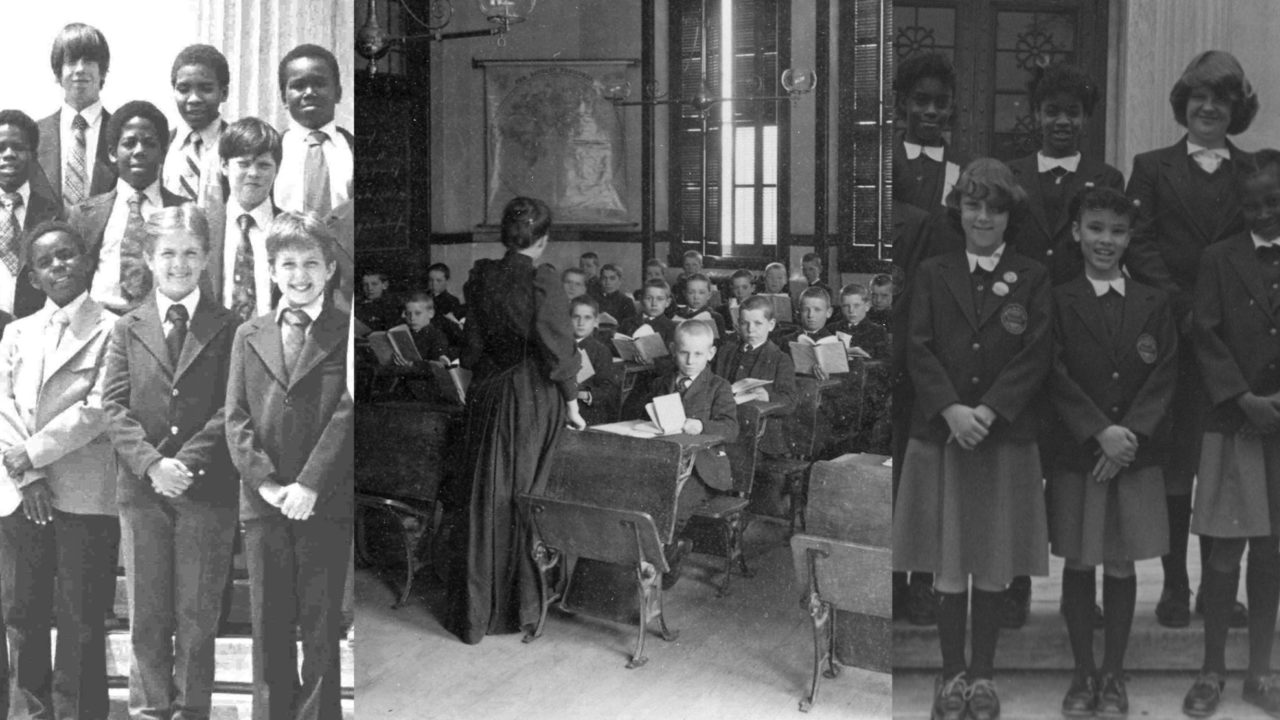Founder’s Hall Museum

History of Girard College
Girard College was formed by an unprecedented act of philanthropy shown by French immigrant and merchant, Stephen Girard. At the time of his death in 1831, Stephen Girard was the richest man in America and his endowment for Girard College was, up to that point, the largest private charitable donation in American history.
In the middle of the 19th century, Philadelphia was at the forefront of creating innovative institutions designed to solve specific societal challenges: Eastern State Penitentiary was built to tackle criminal justice reform, the Pennsylvania Hospital was established to care for patients with mental illnesses, and the Franklin Institute was designed to expand upon scientific knowledge.
Inspired by the institutions around him, Stephen Girard sought to address the challenge of educating young Americans for the future. He directed the city of Philadelphia to use his money to build a boarding school for poor, orphan (interpreted as “fatherless”) white boys so that they might be prepared for the trades and professions of their era. Girard College opened on January 1, 1848.
The school’s unique mission guaranteed that it would become a lightning rod for controversy surrounding the important social issues of each era including religious freedom, and racial and gender diversity. The first major controversy was religious, centering on a clause in Girard’s will that barred clergy from the campus, so as to keep the students “free from the excitement which clashing doctrines and sectarian controversy are so apt to produce.” In 1836 Stephen Girard’s surviving French relatives challenged his will on the grounds that it was opposed to Christianity and therefore to Pennsylvania law. Daniel Webster argued for the family at the U.S. Supreme Court, but the court ruled in favor of the school.
In the 20th century, questions of race and gender came to the fore. Girard College desegregated in 1968, following a fourteen-year struggle by civil rights activists, spearheaded by Raymond Pace Alexander in the 1950s and Cecil B. Moore in the 1960s. Following an unsuccessful lawsuit brought by Alexander from 1954-1957, which went to the Supreme Court, in 1965 Moore organized seven and a half months of daily protests outside the wall of the school. This resulted in a second legal case (1965-1968) which led to Girard College’s desegregation on 14th amendment grounds.
The admission of girls came in 1984 and was less contested, but perhaps ultimately a bigger shift in school culture, as Girard College transitioned from all-male to co-ed. The initial cohort of girls was admitted into the elementary school, so the graduating class of 1993 was the first to include women.
Since 1848 over 20,000 students have been educated at Girard College. Throughout its history, the school has experimented and adapted its program in service to Girard’s original mission to educate children to become productive citizens. Stephen Girard’s will outlined a broad academic background, including math, science, reading, writing, grammar, and modern languages, to be followed by an apprenticeship in a business or trade. By the end of the 19th century apprenticeship was no longer a viable model and Girard College created on-campus career training through business courses and a mechanical school, which taught skills such as printing, metalwork, and auto mechanics.
Girard both innovated and responded to changes in educational theory and practice over the years, experimenting, for example, with co-operative internships in the 1910s and project-based learning the 1930s. Increasing numbers of students went on to college in the 20th century and by the early 1990s the school phased out the mechanical school to focus on a completely college-preparatory model, which it retains today. The goal remains the same, which is to prepare students for a successful life and career after they leave Girard.